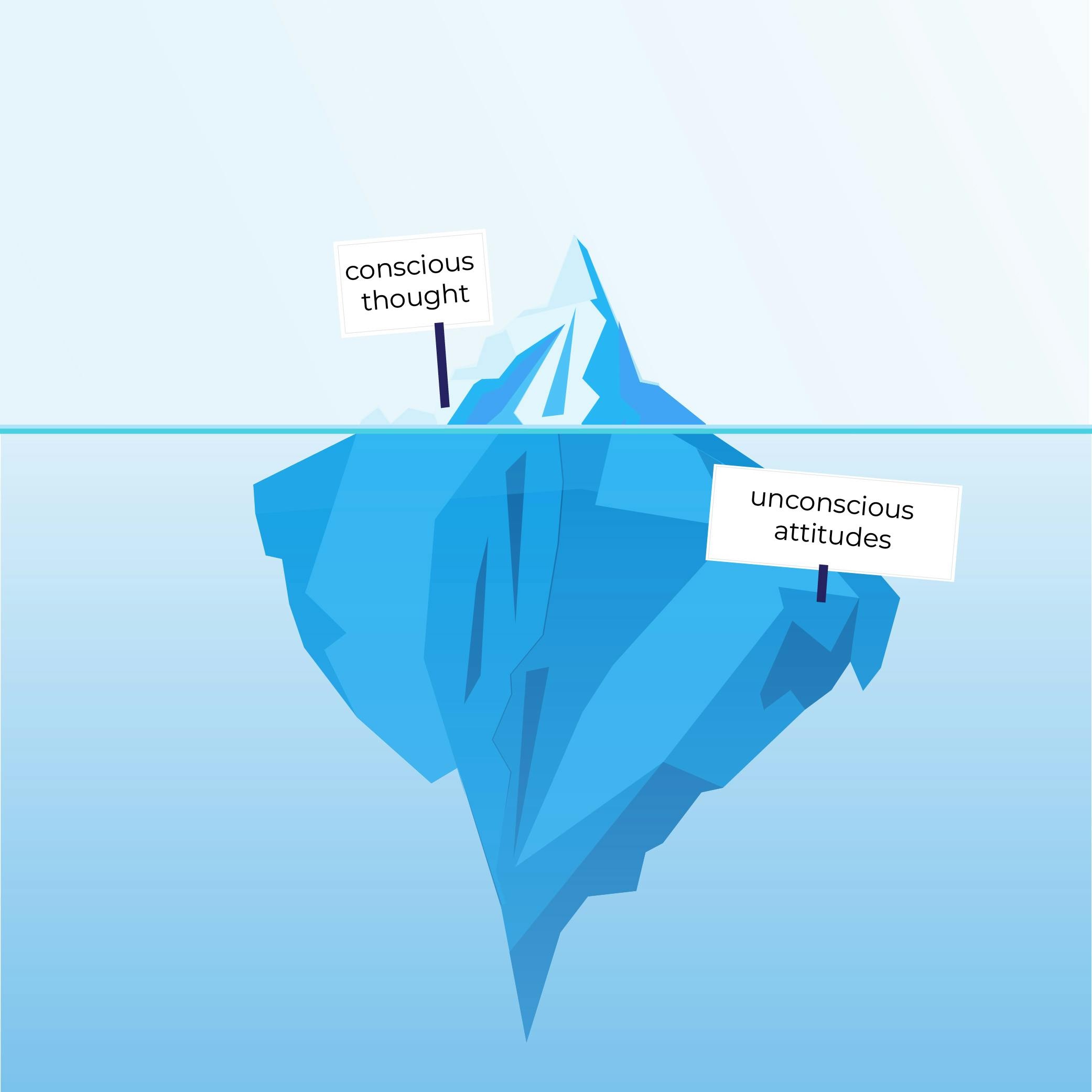FAST CHOICE TESTING: A DIRECT LINE TO CONSUMER ATTITUDES AND GUT REACTIONS
The forces that drive our feelings and choices about brands are outside our conscious awareness. Packaging designs stir unconscious associations and motivations. Taglines forge unseen links between products and desires. Traditional surveys miss these subtle influences, but timed response tests reveal hidden reactions - mapping impulses and associations that silently shape our relationships with brands.
Similarly, even though ads may not be remembered, their latent influence remains. Even brief forgotten exposures subtly shape brand perceptions, which timed-response research reveals but standard questions could miss.
You may not remember seeing a new brand's ad on Facebook last week. But response-timed tests could reveal that you now have more positive associations with that brand than someone who missed the ad. This demonstrates how advertising can subtly affect you without conscious recall - your response times in research on that brand can expose unconscious effects.
At CloudArmy we have pioneered “Fast Choice” - a timed dual choice survey built for implicit insight. A decade of development and 1000+ studies across the globe have demonstrated its value for uncovering the fast and intuitive gut-reactions guiding consumer behavior.
Adding response time measurement provides a new dimension of information to extract more meaning from surveys. It shines a spotlight on the relative strength of unconscious associations that consumers themselves may be unaware of. This deeper understanding of the consumer allows you to create stronger connections through intuitive design and messaging.
Self-reported attitudes often don’t reveal true motivations. Social desirability causes people to portray themselves positively rather than admit less virtuous impulses - such as overstating the likelihood of purchasing environmentally sustainable products. We also lack self-awareness of unconscious drivers, presenting rationalized attitudes instead, to appear logical and consistent, even to ourselves. Furthermore, many attitudes are weak or ambivalent, with conflicting feelings that are shaky predictors of choice. We often lack the ability to accurately rate or articulate subtle feelings on scales, such as preferences between package designs, but these feelings can be revealed in response time differences. Casually formed opinions without strong foundations exert little pull on behavior and are easily changed. Asking directly for attitudes gives an incomplete picture. But timed response tests can uncover the automatic associations guiding our actions, often adding color or even reversing what surveys show.
This is where timed response testing can provide powerful additional insights.
What Does Response Speed Tell Us?
The speed at which consumers respond to questions or react to stimuli provides a window into the strength and ‘accessibility’ of their attitudes and preferences. Timed response tasks require quick judgments - most of the responses we capture are less than a second - tapping into automatic or "System 1" thinking. This reveals attitudes and associations that exist below conscious awareness, before we are able to consciously self-censor or over-think our responses.
Numerous academic studies have demonstrated the benefits of response latency measures for improving predictive validity. For example, faster responses to political candidate questions have predicted a greater likelihood to actually vote for that candidate [1]. Increased reliability has also been found when adding response timing to career interest surveys [2].
Other research has shown the ability of timed-response tests to predict the performance of sales agents. They responded in a timed-response test to a series of statements about their work. Combining their choices on the statements with their response times revealed subtle attitudinal differences invisible in the declarative data alone. Machine learning confirmed the superior predictive ability of merging choice and response time data. The response times uncovered hidden strengths and weaknesses driving real-world sales performance. [3]
Other research has shown how response-time tests can reveal the effect of short exposures to brands in advertising. Even when briefly exposed Internet pop-up ads are forgotten, they can still influence brand attitudes and purchase intentions in implicit memory over time.
When questioned days or months after brief low attention exposure to pop-ups, participants showed no explicit memory of having seen the pop-up ads or brand previously. However, their response times to positive brand associations were faster compared to unexposed participants, indicating more accessible positive implicit attitudes formed by the forgotten pop-up exposures.
This occurred even though their overt stated attitudes and purchase interest did not differ much from the control group based on direct verbal questions. The indirect response time measures revealed implicit persuasion effects that the explicit measures missed. Specifically, pop-ups with images created the strongest implicit positivity. Logos alone also increased positive accessibility.[4]
Fast response times indicate high accessibility of an attitude in memory [5]. Strongly connected attitudes spread activation quickly to associated feelings and concepts. Highly accessible attitudes are more impactful in guiding attention and behavior [6]. They are also more resistant to change compared to weakly held attitudes [7].
Emotionality is another factor linked to faster responses. More intense feelings, whether positive or negative, produce quicker reactions [8]. So response speed provides an additional gauge of a consumer's emotional engagement, beyond just the overt rating or choice. Indifference tends to correspond to slower responses.
Conditions for Meaningful Response Latency
For response time to be meaningful, certain requirements should be met:
Questions must allow for quick, spontaneous decisions tapping "System 1" thinking. This is facilitated by enforcing short time limits for responses.
Respondents need sufficient engagement and motivation. Safeguards should prevent random rushed responses based on low attention, which yields poor quality data. We mix into our exercises questions where there is a correct and incorrect answer so that respondents must maintain good attention and not respond randomly. If they repeatedly get these “easy” questions wrong, we can presume low attention to other questions and tasks as well and can filter them out..
Complex or lengthy stimuli should be avoided as they inflate response times. If stimuli require more time to process, they can be displayed separately before a brief evaluation question appears. This prevents time to read the stimulus from diluting the decision response time. Verbal stimuli should contain just a word or two, or a short phrase, to avoid extra reading time.
Practice trials can help participants adjust to speeded tasks before critical data collection.
Individual differences in baseline response speed should be measured and controlled for.
Dual-choice designs are optimal, presenting two opposing response options (e.g. agree/disagree, yes/no) [9]. Respondents classify stimuli by pressing one of two keys or tapping on a touchscreen within a 2 second window. This streamlined approach minimizes reading time and speeds up the pace.
The feedback we’ve gathered from participants reveals they are more engaged in these types of tests. That can be an important consideration as it's often becoming harder to engage some demographics in online market research. Among users of both keyboard and mobile devices, all age groups and men and women, participants reported that, given the choice, they would rather do a Fast Choice test again than a scale-question based test and that they would be more likely to abandon a scale question test than a Fast Choice test. Also, 72% of participants said that they found the Fast Choice tests fun and 77% said they found it easy to complete.
Business Applications and Benefits
Timed response testing provides Market researchers with a powerful implicit measurement tool to complement explicit responses. Key business applications include:
Packaging and Product Design
Quick reactions to alternative designs based on appeal and other attributes can identify optimal concepts. Subtle emotional responses are revealed based on response speed.
Advertising and Messaging
Sorting a series of ads, storyboards or slogans by immediate feeling allows detection of the most engaging creative ideas. Response times indicate strength of emotional activation.
Brand Equity
Fast reactions to beloved brands demonstrate deep-seated preferences. This gauges true loyalty beyond claimed allegiance. Speed shows the automatic associations driving consumer choice.
Customer Experience
Quick reactions to staged scenarios can identify pain points and evaluate solutions. Response speeds reveal where emotional engagement peaks or wanes.
Concept and Product Testing
Speed of response demonstrates the intuitive appeal and motivation generated by new offerings. Quick reactions are less inflated by deliberation.
Audio & sonic logo testing
The associations triggered by commercial music and sonic logos are good candidates for fast, intuitive timed-response measures.
Tracking Campaign Effectiveness
Shifts in response speed over time reveal if attitudes are strengthening or weakening. This indicates resilience to competitive messaging.
The Need for Speed
Never has it been more important to understand consumers’ automatic, intuitive reactions to brands, designs and communication.
In today's frenzied world, consumers are overwhelmed with information and choice. Their attention is pulled in countless directions. We face myriad product options in store and online, and multiple screens in our homes with ever-present advertising clamoring for our attention. Brands must find new ways to break through the clutter. In this environment of information and choice overload, our decisions are often emotional, quick and intuitive. In other words, they operate mostly below the waterline of conscious awareness.
Timed response tests allow you to start a dialogue with the fast-thinking heart, not just the slow-thinking head. They provide a direct line to System 1 gut reactions. Consumer assessments are less filtered by deliberation and rationalization.
So for market research that cuts to the quick of consumer psychology, don't just listen to what they say - pay attention to how fast they say it. The speed of the response is often where the real meaning lies.
References:
[1] Fazio, R.H. and Williams, C.J., 1986. Attitude accessibility as a moderator of the attitude–perception and attitude–behavior relations: An investigation of the 1984 presidential election. Journal of personality and social psychology, 51(3), p.505.
[2] Tracey, T.J. and Tao, C., 2018. Response latency in interest assessment: An added tool?. Journal of Vocational Behavior, 108, pp.121-131.
[3] Ohme, R., Matukin, M. and Wicher, P., 2020. Merging explicit declarations with implicit response time to better predict behavior. In Anthropological Approaches to Understanding Consumption Patterns and Consumer Behavior (pp. 427-448). IGI Global.
[4] Courbet, D., Fourquet-Courbet, M.P., Kazan, R. and Intartaglia, J., 2014. The long-term effects of e-advertising: The influence of internet pop-ups viewed at a low level of attention in implicit memory. Journal of Computer-Mediated Communication, 19(2), pp.274-293.
[5] Fazio, R.H., 1990. A practical guide to the use of response latency in social psychological research. In C. Hendrick & M.S. Clark (Eds.), Review of personality and social psychology, Vol. 11 (pp. 74-97). Sage Publications.
[6] Roskos-Ewoldsen, D.R. and Fazio, R.H., 1992. On the orienting value of attitudes: attitude accessibility as a determinant of an object's attraction of visual attention. Journal of personality and social psychology, 63(2), p.198.
[7] Heerwegh, D., 2003. Explaining response latencies and changing answers using client-side paradata from a web survey. Social Science Computer Review, 21(3), pp.360-373.
[8] Saunders, T.S. and Buehner, M.J., 2013. The gut chooses faster than the mind: A latency advantage of affective over cognitive decisions. Quarterly Journal of Experimental Psychology, 66(2), pp.381-388.
[9] Dolnicar, S., Grün, B. and Leisch, F., 2011. Quick, simple and reliable: Forced binary survey questions. International journal of market research, 53(2), pp.231-252.

.jpg)


